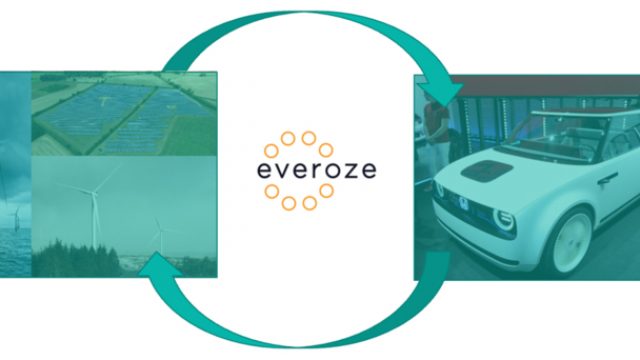Swarming on solutions for domestic energy-as-a-service
15th May 2019
In her latest post, Everoze partner Felicity Jones publishes a sneak preview on our up-coming report about domestic energy as a service and how this might be delivered.
We’re working to identify and address barriers to domestic energy-as-a-service models. Think solar, batteries, smart heating controls and EV chargepoints packaged up and optimised into services, in exchange for a monthly subscription fee. Here’s a sneak preview of our thinking.
Ok, so this blog goes against all marketing guidance. I’m going to share some insights from an Everoze report weeks before it’s actually published. It’s something we’ve been busily working on with the Core4Grid consortium. Core4Grid is an ambitious multi-home trial of domestic demand-side response; in it, we seek to demonstrate consumer acceptance of, and engagement in, the domestic flexible future grid.
Of course, what we’re supposed to do with this report is keep it all hush hush, dot the ‘i’s, cross the ‘t’s, and then launch it with great fanfare – press release, mobilised journalists, social media campaign, you know the drill.
But, you know, that doesn’t quite feel right.
You see, this is a report about the critical importance of getting on and trialling things, securing data in the field and learning from it. It’s about the power of rapid feedback from a swarm of activity. So I thought: let’s practice what we preach. Let’s accelerate the feedback process. Let’s put some of our initial thinking out there and see what you think.
Workshopping
So last week we ran a workshop. By ‘we’, I mean Graham Oakes, Benjamin Lock and myself, working under the Core4Grid project. Our mission: to collectively map out and cluster barriers to domestic energy-as-a-service (EaaS).
For anyone thinking, “what-the-freak is domestic EaaS?!” here’s your quick briefer. We’re talking about an energy supply model where a household pays a fixed fee in return for specified energy services – e.g. heating, lighting, and perhaps mobility too. Rather than paying for kWhs, the household pays for the services that those kWh deliver, subject to a fair usage clause. Meanwhile, the energy provider installs hardware to make this possible, and dispatches these assets flexibly to optimise value behind-the-scenes, subject to your user preferences. The consumer benefits from lower bills and enhanced carbon savings.
There were a few key themes which jumped out from the workshop:
- Simpler rules, please! It’s a common complaint, but a valid one. Navigating 264 pages of Capacity Market rules, multiple codes and different prequalification guidance is a real headache – especially when some have unintended consequences for domestic EaaS. These cumbersome rules work against the Principle of Agility promoted by Energy Minister Greg Clark last November. The good news is that Elexon are already on the rationalisation case with its Energy Codes Review. Workshop participants also discussed the DNO-style outputs-based regulation as a possible model.
- This is about people. It’s easy to get caught up in technocratic discussions of revenue stacking interfaces and testing procedures, but what about the people we’re ultimately trying to serve? Do they understand the EaaS model, and do they want and trust it? It’s worth noting that the group was pretty polarised on this point: some thought we should nail the business case first, others thought that consumers should be the starting point.
- Deploy and get data. One of the post-its my subgroup ended up writing was ‘Mystery Balancing Mechanism barriers’. The thing is, some barriers don’t emerge until we get on and try something. We suspect that there will be issues with domestic portfolios participating in the Balancing Mechanism, but we don’t know what they are yet. All of which emphasises the importance of real trials – such as Core4Grid – to gather data, learn, implement, repeat.
Rapid feedback
As for the details: you’ll have to wait for the report itself 🙂 We’re in write-up mode right now. But for us, this report is just a mechanism to collectively frame our thoughts – our ultimate goal is to address those external barriers. So we’re more interested in verbs (the doing) than nouns (our report): we want to influence, collaborate, trial, learn, implement, refine and more.
If you’d like an early sneak preview of our thinking so far and are happy to act as reviewer – please get in touch. And if you’re just generally curious – hit Follow.
Spoiler alert: we’ve been thinking a lot about bees…
—
Thanks to our workshop participants for stellar contributions: Akshat Gupta (EDF),Daniel Saker (UKPN), Jason Palmer (Cambridge Energy), John Mason (EDF),Mitchell Curtis (Upside), Navdeep Gujral (BEIS), Peter Frampton (Elexon), Rick Parfett (ADE), Romina Arefin (UKPN), and Thom Whiffen (geo). Thanks also to Rachel Bray (Uni of Exeter) and Randolph Brazier (ENA) for contributing separately.
And thank you to BEIS for funding Core4Grid under the Domestic DSR Competition.







